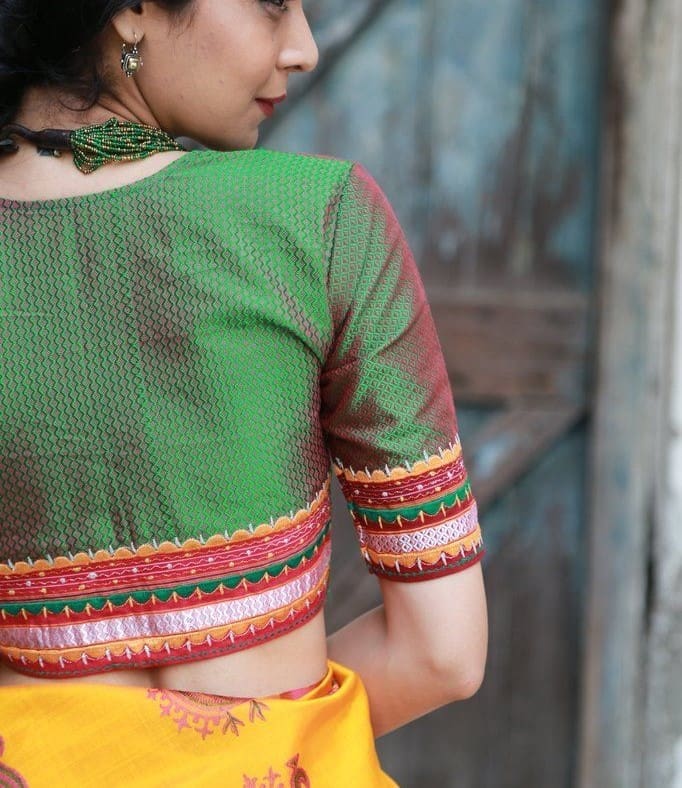Dharwad khun, also known as khana, is a fabric woven only in pit looms in Guledagudda of Bagalkote district, in the state of Karnataka. This hand-woven fabric, used only to make saree blouses, is easily identified by the small white intricate motifs and its very unique reddish-purple border.

Khun faced challenges of increasing production cost and a shortage in demand, just like the other hand-woven fabric in the country. Many set up power looms to increase production and cut cost by using less labor and turning to cheaper yarns like viscose and polyester.
While many fashion designers work with Benarasi, Chanderi, Ikat, Jamdani, and Kanjeevaram, khun did not find any patrons in the fashion world as the width of the fabric is 32”, meant for making saree blouses. By increasing width in order to create different styles of clothing, and to obtain patronage of designers who showcase the fabric in fashion shows, the weavers hope to regain their place in the handloom world.
The situation is changing slowly. Mumbai based fashion designer Vaishali Shadangule of Vaishali S. brand, Bengaluru based Janhavi Kulkarni of KalaNele, Jui Tawade, co-convener of Indian National Trust for Art and Cultural Heritage (INTACH) Pune chapter and Jaya Jaitly, founder of Dastkari Haat Samiti, an art and craft market, have stepped in, to help the khun weavers.
The main fabric is of brilliant jewel colours like electric blue, emerald green, ruby red and golden yellow, has its own unique small motifs. A contrast border, small irregularities and slight unevenness of the handloom weave using only pure silk and cotton yarn makes khun one of a kind.
Shadangule began working with a few weavers to persuade them to increase their loom size and add new colours. She created a whole collection, consisting of only the khun, to the New York Fashion Week ramp in 2019 and got a good response. She later displayed the collection at India Fashion Week, Delhi.
Dilli Haat helped spread awareness about the beauty of hand-woven khun. People are starting to recognise the detailing that goes into this weaving, and as well as the comfort of wearing this slightly thick and coarse fabric made from natural fibre alone.

Designer Janhavi Kulkarni’s KalaNele showcased products like sarees, bags, cushion covers, lampshades, stoles, salwar suits, accessories and even footwear made of khun fabric, at the Dilli Haat.
In consideration of the demand for fabrics of 32″ to 36″ width for duppata and 45″ width for saree, most of the weavers decided to remodel their looms, but their plan was stalled because the pandemic.

By receiving support from designers, experimenting with new colours in yarn dyeing and using only natural silk and cotton yarns have started. Weavers continue to sell in their regular markets in Pune, Sholapur, Mumbai, Kolhapur, Bengaluru, Dharwad and Hubbali.
The down to earth khun used by farmmhands reached the royals, when Maharani Radhikaraje Gaekwad of Vadodara was spotted wearing one. Thus beginning the slow development of khun as the mainstream fabric, represented by a royalty.
References:
https://thewire.in/the-arts/with-urban-patronage-khun-weavers-hope-for-a-better-market

